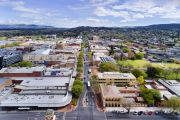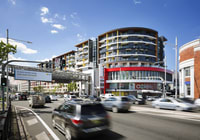
Australia’s cloud burst
The idea that we need giant warehouses to hold all the ones and zeroes that make up the world’s data can be a bit hard to compute. It turns out that the “cloud” is a terrestrial proposition, comprising thousands of data centres globally that all have specific needs for their precious servers, drives, and networking systems, including vast amounts of energy, water, and space.
Tech is one of the Australian economy’s fastest-growing sectors, representing around 8 per cent of our GDP. The data centre boom is in lockstep, with the infrastructure supporting our increasingly integrated digital world requiring housing.
CBRE Research’s Australia’s Data Centres October 2024 report sums up the hot market: “We estimate the current Australian investable universe for data centres totals $23 billion … and forecast [that] to grow to nearly double in the next four years to circa $40 billion.”
“The property development models for data centres differ from traditional commercial real estate due to the requirements and timelines of the tech companies leasing them,” says Sass Jalili, head of industrial & logistics and data centre research in Australia for CBRE. Prerequisites include proximity to key infrastructure such as fibre optic networks, power and water supplies and customers.
“Latency – the speed that you can deliver data to end users – is measured in milliseconds,” says Alex Moffatt, head of APAC data centre capital markets and advisory for US commercial real estate firm Cushman & Wakefield. Ergo, data centre sites become more attractive the closer they are to CBDs. “We used to work within 20 kilometres of the city, it’s now expanding to around 30 kilometres, but that’s considered the upper limit for cloud data centres in Australia.”
These centres are 10 to 50 times more power-hungry than a typical commercial building, meaning that developers must engage with energy utilities very early on to validate their supply. “For cooling, the preference is for potable water and in Sydney, water-use efficiency is becoming a consideration in the approvals process because of the amount of water data centres consume,” says Moffatt.
“There is massive upfront capital expenditure for infrastructure and technology integration,” says Jalili. “These projects often involve partnerships between real estate developers and tech companies with long-term leases or co-ownership models.”
In its October 2024 APAC Data Centre Update report, Cushman & Wakefield noted that Amazon Web Services announced it will invest $13.2 billion in two new mega data centres in Melbourne and Sydney. Meanwhile, Australia’s largest data-centre company, NEXTDC, is raising $US848.5 million to finance its development pipeline and expand its Sydney and Melbourne data-centre networks.
“From an APAC perspective, Sydney is the third-largest data centre market, following Tokyo and Singapore, because of the fundamentals of robust infrastructure, extensive connectivity, and proximity to major business districts,” says Jalili. Melbourne is now expected to grow the fastest based on the project pipeline “owing to the land availability and pricing compared to Sydney”, she adds.
The need to address latency through proximity means everyone gets a piece of the pie. “Perth is another emerging APAC hub and NEXTDC recently opened a $100 million data centre in Adelaide,” says Jalili. “AirTrunk’s SYD3 in Huntingwood in Western Sydney is the largest hyperscale data centre in APAC – excluding China – by capacity. It exceeds 320 megawatts and is set on 8.3 hectares.”
One thing is certain, says Jalili, “This isn’t a fad.” Artificial intelligence runs on data and requires exponentially more computing resources, which means more servers, more power, more water, and more purpose-built campuses to house it all.










